Have you ever thought about how many marks you’ve made on paper in your lifetime? Starting as a doodling toddler, scribbling on your parents’ utility bills perhaps, then gripping a crayon in Kindergarten to draw a house and a tree, or to write your name for the first time. Later, you made a few grocery lists on envelopes. Wrote a love letter. Even if you’re from the generation that types out 145 characters at a time with your thumbs, you’ve still no doubt marked up hella paper in your day.
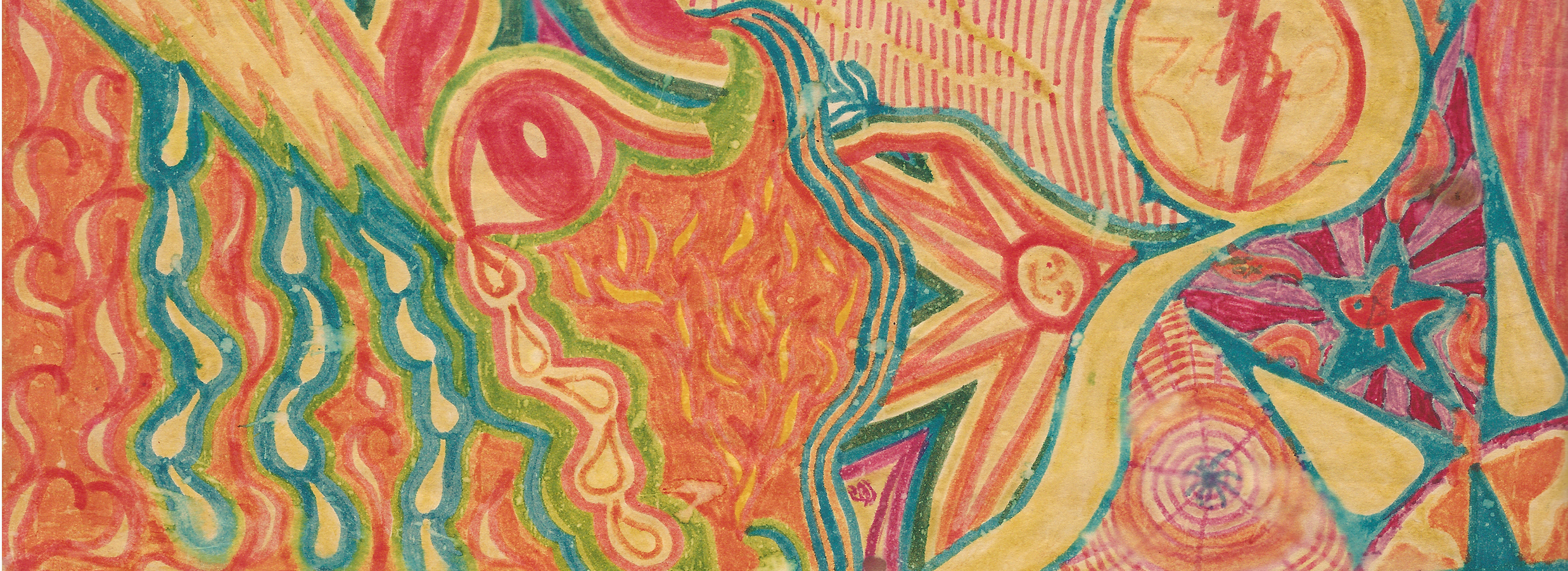
All of it has been drawing practice. Which makes you kind of a seasoned doodler.
What is Drawing?
Drawing is making marks, mostly on paper, sometimes in the dirt, on a wall or anywhere that’ll take it. Human beings have been drawing from the start, even before we devised alphabets, which led to words, lines of poetry, eventually prose. Drawing is in human DNA. Even if you aren’t a professional illustrator, you are human and so have it in you to draw, if you feel like it.
This column is mostly about books that have drawings in them, books created by people who draw for a living or at least spend gobs of time drawing. They have mad drawing skills and I love sharing their beautiful work. But from time to time, I like to give everyone else a nudge towards drawing. All the I’m-not-an-artist! types who have every right to draw, but tend to restrict themselves because they believe only artists can draw.
Only artists can draw. A weary old myth to which I say: Poppycock! Anyone can at least draw nothing!
I started the new year (2019), posting about tools you need to get started (see Resolving to Draw More). This follow-up post offers a few exercises to get you doodling (in case you bought drawing equipment in January and have been giving it guilt-stares ever since and here it is June already).
So, pull that stuff out of the bag and get doodling!
Draw Nothing
If you don’t know what to draw, draw nothing. Nothing is a doodle to get you started. Try to resist the urge to turn it into something. Who needs the pressure of drawing something? Nothing comes in all shapes and sizes. Nothing can take just a few lines to render. Or your nothing may be dense and dark, a broody kind of nothing.
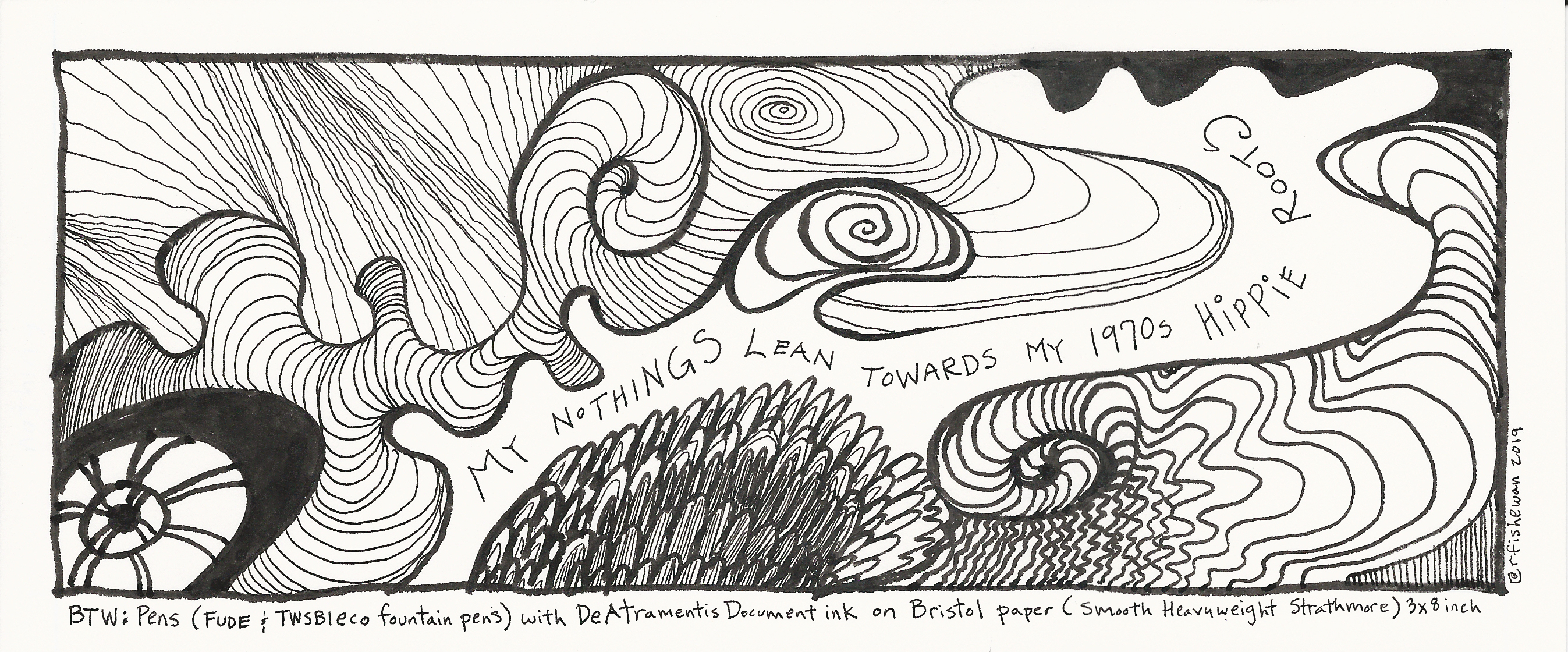
If you absolutely have to draw something, consider drawing a sphere. In graduate school at Berkeley, I TA’d an introductory design class for professors Chip Sullivan and Joe Slusky. They always had us warm the students up with sphere-drawing. Big spheres on jumbo newsprint, using the whole arm, some shoulder even. The warm-up still works if you make small spheres in your sketchbook. Or, again, you can just draw nothing.
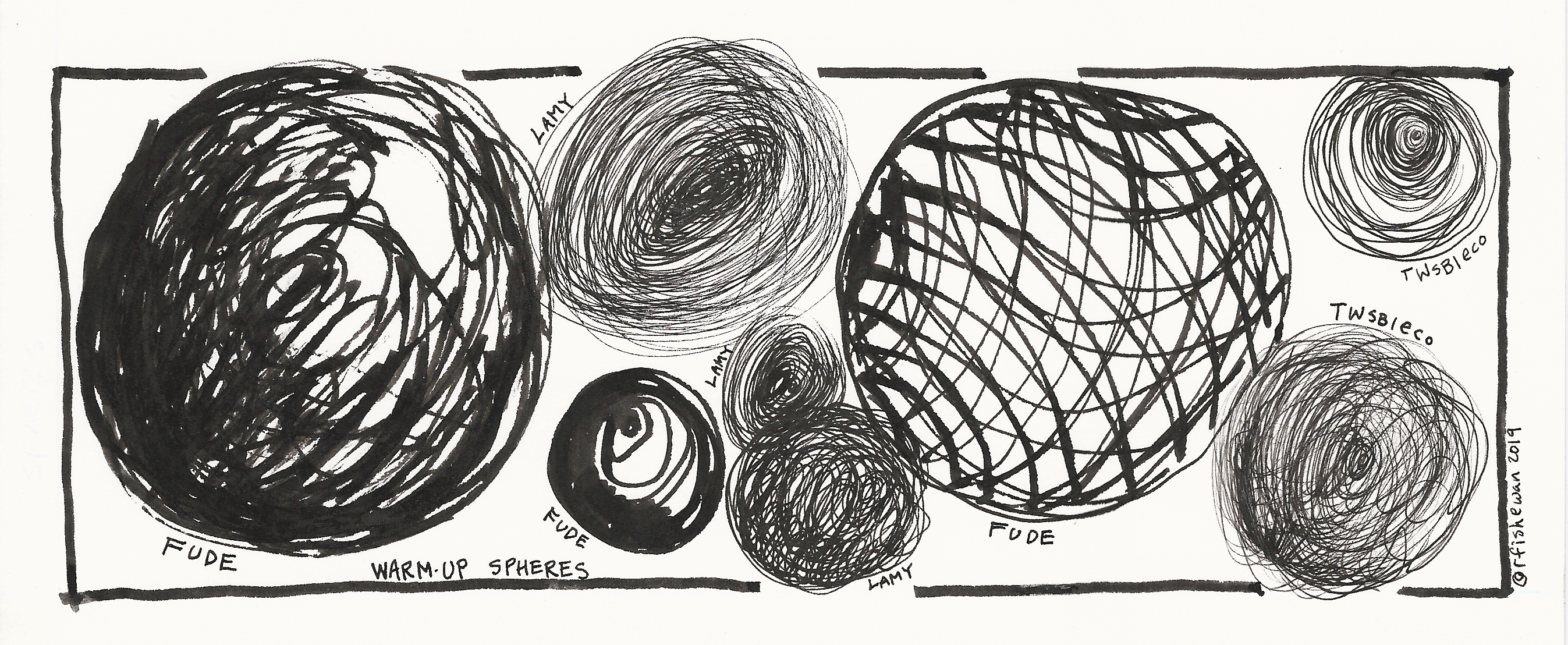
Some Science for Sceptics of Doodling
Drawing nothing is a bit like strolling without purpose, just walking about on an explore, no particular destination in mind. Both are ideal methods for unstopping the brain so ideas can flow. Science supports the benefits of this kind of doodling (and walking for that matter), such as stress reduction, better memory retention and increased creative problem-solving skills. If you have any idle moments over the summer months, or are in a really boring meeting, give doodling prompts a try (see below). (BTW doodlers retain 29% more than non-doodlers, so you’ll remember more from that boring meeting than you would by just sitting and pretending to listen.)
Three Things to Try While You’re Drawing Nothing
1) Play around with line vocabulary
What is line vocabulary? Just your own collection of line shapes (like phrases) that you develop to help give your drawings your own voice. They can be loose and loopy, light, airy, dark, foreboding, feathered or jaggetty. It helps to play your favorite relaxing music while you play with your line vocabulary, so you don’t start judging your own visual voice. I’ve drawn a few examples to get you started. You can try them all, pick your favorites and cover a page with nothing made from these little line phrases, or start making up your own.

2) Hatch and Cross-Hatch
Hatching is making a series of parallel lines that fill up space, imply light, make shadows and generally pass the time. When you hatch over hatches, you’re cross-hatching. The more hatch layers you make, the darker the space becomes. I follow Landis Blair on Instagram (@landisblair), because he is a master hatcher. Sometimes he posts those fast videos of him drawing and I just watch him hatch away. It’s very inspiring and relaxing. His drawings are amazing and complex. I don’t have the patience to hatch like a master, but I still practice a little every day, or at least I try. Here are a few of my less masterly hatches.
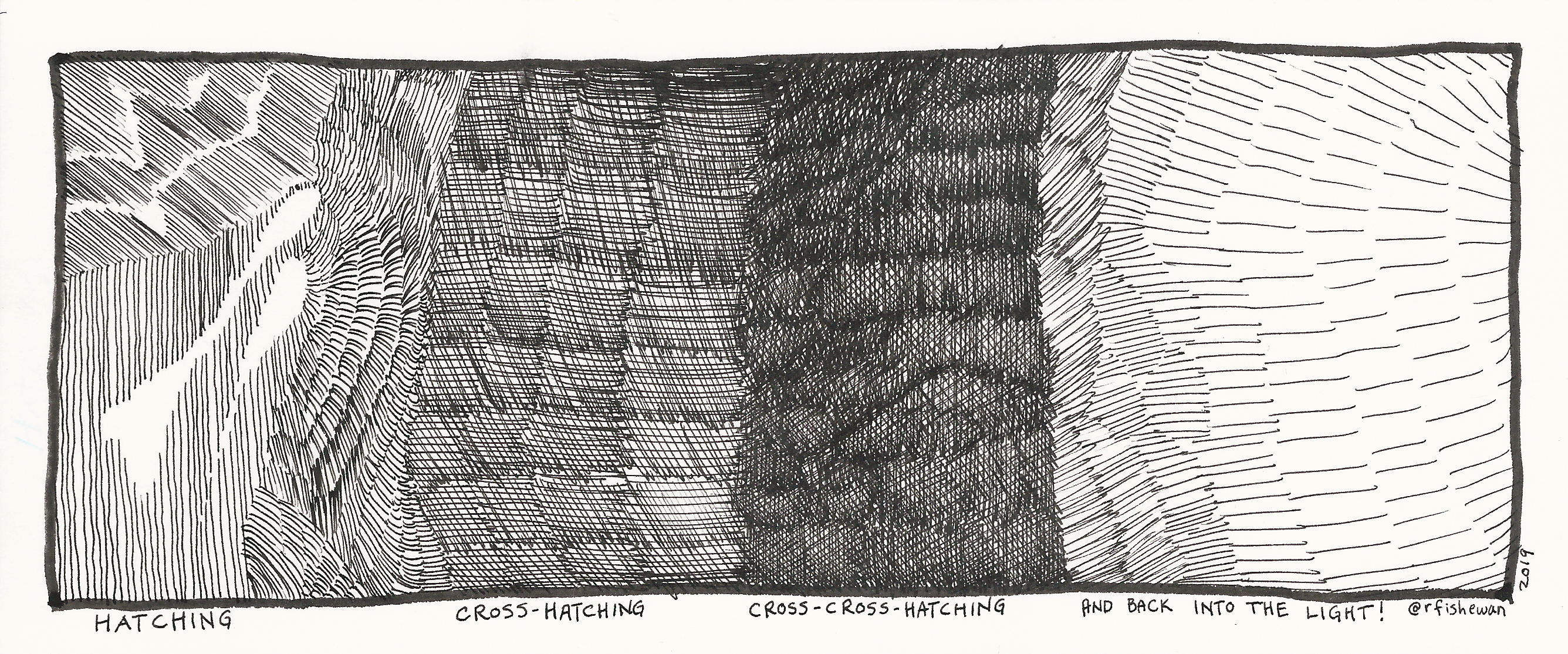
3) Divide and Conquer
If the blank page feels large and daunting, make a few shapes on it and doodle in those. Doodling in the confined spaces you draw on the page can reduce blank-page-anxiety and recall some old geometry you may have forgotten from high school. When I was much younger, I would spend hours filling whole pages with lines, from edge to edge, all the way around (that groovy doodle up at the top of this post is a slice of a bigger page I covered with lines).
As a kid, I had lots of time and not much paper. But now that I’m older and have less time left on earth than I’ve already lived, I draw fewer lines, make smaller drawings and often switch over to water colors, to speed things up (Sidenote: color is complex, but so fabulous, more on that in a later post). Doodling with the Grim Reaper looking over my shoulder has encouraged an economy of lines in my work. One of the perks of advancing age. Yay, elder me!
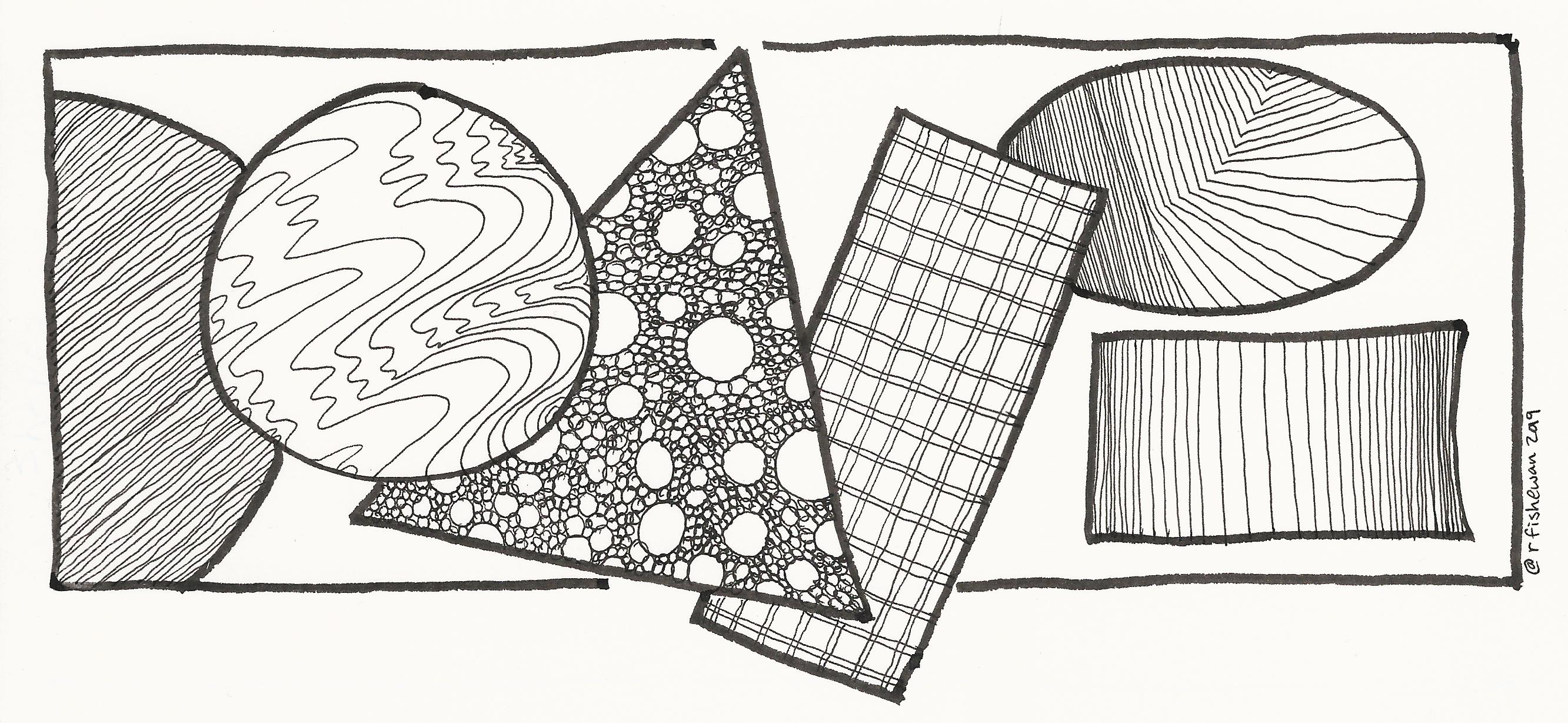
P.S. More fun with drawing coming soon! Books by Hippocampus has a craft book by yours truly on the horizon! It’s a book version of drawing for writers, that’ll be a pocket-sized book of drawing prompts and little tips for getting started as a writer who draws. A kind of vade mecum for doodling writers. I’ll post more info as the project develops on my website. I’ll also be teaching a pre-conference workshop on drawing for writers at HippoCamp 2019, a conference for nonfiction writers (and co-presenting on hybrid form with Lara Lillibridge!) in August. I hope to see you there! In the meantime, keep drawing nothing!
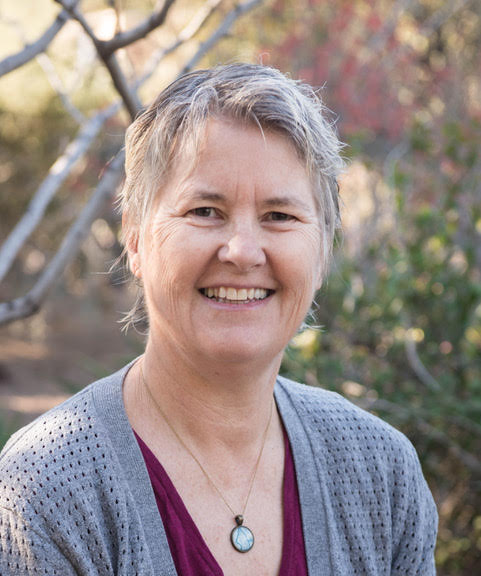
Rebecca Fish Ewan, a poet/cartoonist/writer and founder of Plankton Press, teaches in The Design School at Arizona State University. She grew up in Berkeley, California, and now lives in Arizona with her family. Her cartoon/free verse memoir, By the Forces of Gravity, was published in 2018 through Books by Hippocampus. You can connect with her at rebeccafishewan.com or Instagram @rfishewan.







